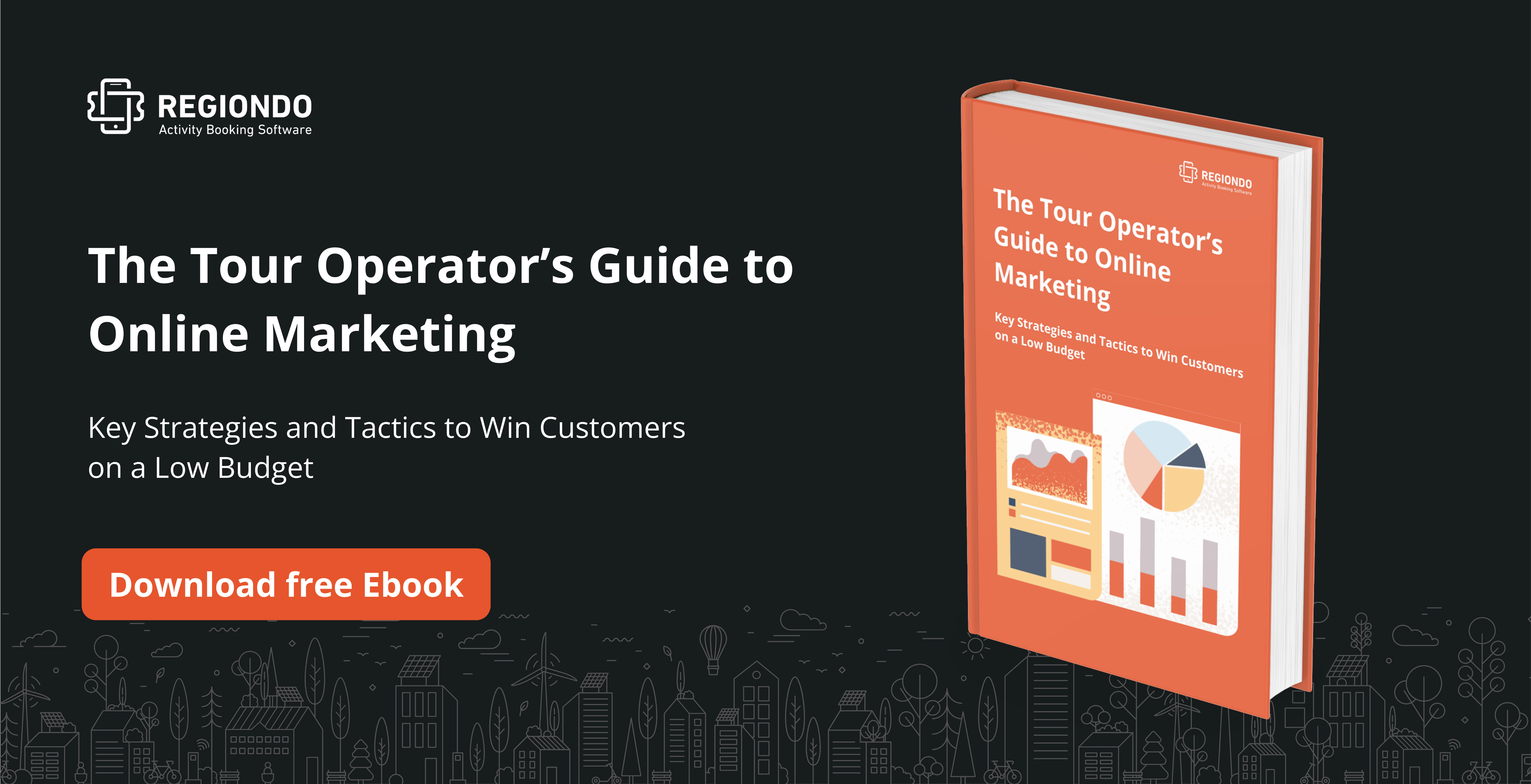Competition is fierce in the tourism industry for tour operators and activity providers as travelers are becoming savvier and the market is becoming more saturated. There are a plethora of review websites to peruse and niche blogs to pour-over.
But how do you stand out from the crowd and make sure your company wins the business? To quote Bill Gates from an essay he published on the future of the internet ‘Content is King’, and we strongly agree!
In this article, we will discuss our top 5 content marketing tips for tour and activity providers that will help you boost traffic to your site and ultimately convert visitors into paying customers.
But First, What is Content Marketing?
Content marketing is a way of reaching the customer and increasing interest in your brand. In a nutshell, it means creating and distributing content that is both valuable and relevant to attract and retain your target audience.
Why should you do this? Well, if you provide consistently useful and interesting information, your buyer will ultimately reward you with their business as they gain trust in your brand and your messaging.
Content can include blogs, podcasts, newsletters, webinars, infographics, and videos, to name but a few examples. It is a low-cost way of increasing brand awareness and maintaining recognition, particularly in these difficult economic times.
Traditional marketing techniques like direct mail and TV ads push a message out to an audience who may or may not be interested in your product or services. Content marketing pulls an already interested audience to your platform and establishes a dialogue, automatically bringing relevant people into your sales funnel.
Should Tours and Activities Do Content Marketing?
In a word, YES! 82% of all tourism bookings from 2018 were made online. That said, simply having an online presence is not enough – to truly stand out in a saturated market and bring visitors to your webpage, content marketing is a must.
It takes at least 6 to 8 touches to generate a valid sales lead according to Salesforce. These touchpoints give you the opportunity to educate and inform people about your product and services. The more valuable the touchpoint, the more likely that they will convert into paying customers.
What’s more – content marketing in the tourism sector shouldn’t be seen as too challenging. Tours and activities are fun and visually appealing which makes them easily marketable. So let’s use this to create some fantastic content!
Ready to learn more? Here are some of our top tips for content marketing.
5 Tips to Improve Your Content Marketing
1. Understand your customer
Yes, this may sound incredibly simple but you would be surprised how many tourism brands ignore this simple rule and fail to gain any traction in their content marketing efforts.
Sit down with your team for a brainstorming session and picture your ideal customer. Ask the following questions: Who are they? Where do they come from? How old are they? How do they tend to book? Where do they go for information? What struggles do they face and what annoys them about the process? Use all of this information to create at least 3 buyer personas – a fictional representation of your ideal customers.
There are a bunch of tools out there that can help you with this research. Check out Google Trends to find out which keywords are trending for your industry and/or geographic region and see how you can incorporate them into your content strategy.
2. Address pain points
Following on from your research above, you should know what stumbling blocks your customers are facing when it comes to booking tours and activities. Do they want to see more reviews? Are they missing some destination knowledge? Take this information and write about it!
Are you trying to attract female travelers for your activity in Lisbon? Why not post a blog article about how safe the city is, then promote your blog post on your social channels and newsletters.
By addressing the pain points that your ideal customer is facing (and no doubt googling!) your content will attract them to your website and you will become a trusted source of information – leading them to convert into paying customers.
3. Plan for perfection
Create and maintain a content calendar. Use this template from HubSpot as a starting point. Having a concrete plan will allow you to stay consistent and relevant, and also hold you accountable to post on fixed deadlines. You should be opening your content calendar every morning and updating the status column to ensure that everything is kept up-to-date.
Aim to work at least 2 weeks in advance but never lock your calendar in 100%, as breaking news might require you to spontaneously write new content and move around previously planned posts.
Make a note of festive occasions, theme days, or national holidays – if you are offering cooking classes and it’s World Nutella day (February 5th for those of you who didn’t know), why not compile a list of your favorite recipes that incorporate Nutella and share on your various channels?
4. Check out the competition
Make a list of your current competitors and companies that you aspire to emulate. Sign up for their newsletters, check out their blog and social media channels. Don’t be afraid to see what your competition is doing for content and learn from it!
Keeping an eye on what your competitors are putting out there and examining the traction their posts are getting will keep you on the right path. Does it inspire you? Could you do better? Give it a shot but remember, stay true to your brand and your unique selling points to really make a difference.
5. Take advantage of User-Generated Content
User-Generated Content (UGC for short) is key in the tourism industry. Why? UGC images are 5 x more likely to convert than non-UG as consumers tend to trust more in content developed by their peers than in content created by brands.
Featuring UGC on your chosen channels will increase engagement as it is considered to be more relatable. It also allows you to tell a more authentic story of your product or services while saving you some time in content creation. How to get started? Create a # and ask your customers to use it when experiencing your tour or activity. You can then re-post the content on your channels – but be sure to tag the original poster!
You can adapt User-Generated Content and use it on pretty much every marketing channel that you use, from print marketing to Instagram Stories. It’s a powerful way to stand out from the crowd and with zero-cost attached.
Content Marketing in Action
Let’s take a look at some great examples of content marketing in action.
Fat Tire Tours is a US-based company offering bike and segway tours in 12 cities around the world, from Florence to San Francisco. They have been operating since 1999 and provide over 190 different tours.
The Fat Tire Tour Blog has a variety of different categories offering information relating to travel and the cities they operate in, without selling their product.
Interested in owning some espadrilles from Barcelona or where to grab brunch in Washington D.C? The Fat Tire Tours blog acts as a travel guide for their locations, showcasing their local knowledge and expertise. This allows the reader to gain trust in the company and when they come to book their holiday activities, they will remember just how much they enjoyed reading this blog.
Not only is their blog a great example of content marketing, but they also have a YouTube channel with over 7.6k subscribers. They post short video snapshots of their services so that potential customers can see exactly what to expect when they book a city tour.
Want to see more? Head over to their Instagram to see how they combine User-Generated Content with destination imagery to create a sense of wanderlust amongst their followers.
Conclusion
Content marketing and your business definitely mix! We are fortunate to be working in an industry that is not only visually appealing but also elicits emotional reactions. Using our tips above, you can improve your content marketing offering, gain brand awareness and increase revenue – what more could you possibly want?
One last piece of advice? Be consistent. There is no point in writing a fantastic blog article one week, and then not posting anything for another 2 months as you will lose all of the interest that you gained from the first post. Make sure that you use your editorial calendar to make a concrete plan and stick to it! You will soon reap the rewards.
You might also like:






